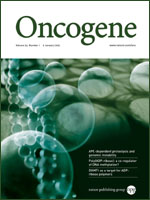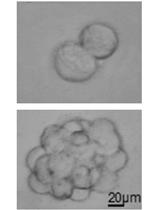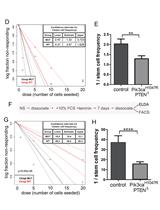- EN - English
- CN - 中文
Sphere Formation (Osteosphere/Sarcopshere) Assay
球体形成(骨球体/肌球体)试验
发布: 2012年12月20日第2卷第24期 DOI: 10.21769/BioProtoc.307 浏览次数: 21903
Abstract
Self-renewing cells from adult tissue (such as bone) that represent a progenitor population can be grown in suspension cultures in the presence of defined serum-free medium. Progenitor cells can be identified by this property of anchorage-independent growth in suspension cultures. These spherical clusters of progenitor bone cells growing under non-adherent conditions are called osteospheres. Such progenitor populations often possess characteristics of multipotency and can differentiate into multiple mesenchymal lineages. Cancer cells capable of growing in suspension have also been reported in osteosarcomas, tumors of the bone tissue. These spherical colonies formed from single cells (clonal) in non-adherent conditions are generally considered to represent self-renewing, stem-like cells and can be employed for other assays such as multipotency and limiting dilution analysis (LDA).
Materials and Reagents
- Osteosarcoma cells (Basu-Roy et al., 2012)
- Trypsin
- Trypan blue from Invitrogen (Life Technologies, Invitrogen™, catalog number: 15250-061 )
- N2B27-defined serum free medium
- DMEM/F-12 1:1 from Invitrogen (Life Technologies, Invitrogen™, catalog number: 11330-057 )
- Neurobasal medium from Invitrogen (Life Technologies, Invitrogen™, catalog number: 21103-049 )
- Glutamax – from Invitrogen (Life Technologies, Invitrogen™, catalog number: 35050-061 )
- 55 mM Beta-mercaptoethanol – from Invitrogen (Life Technologies, Invitrogen™, catalog number: 21985-023 )
- B27 serum-free supplement – from Invitrogen (Life Technologies, Invitrogen™, catalog number: 17504-044 )
- Ndiff Neuro-2-medium supplement from Millipore (EMD Millipore, catalog number: SCM012 )
- DMEM/F-12 1:1 from Invitrogen (Life Technologies, Invitrogen™, catalog number: 11330-057 )
- Complete N2B27-medium (see Recipes)
Equipment
- Standard tissue culture equipment
- Ultra-low attachment tissue culture plastic ware from Corning (Corning Incorporated, catalog number: 3473 for 24 well plate; catalog number: 3474 for 96 well plate)
- 40 μM cell trainer from BD Falcon (BD Biosciences, Falcon®, catalog number: 352340 )
- Dissecting microscope
- Accumax (Innovative Cell Technologies, model: AM 105 )
- Hemocytometer
- 10-cm plate (Corning Incorporated, catalog number: 3262 )
Procedure
文章信息
版权信息
© 2012 The Authors; exclusive licensee Bio-protocol LLC.
如何引用
Basu-Roy, U., Basilico, C. and Mansukhani, A. (2012). Sphere Formation (Osteosphere/Sarcopshere) Assay. Bio-protocol 2(24): e307. DOI: 10.21769/BioProtoc.307.
分类
癌症生物学 > 癌症干细胞 > 细胞生物学试验 > 自我更新
癌症生物学 > 通用技术 > 细胞生物学试验 > 细胞活性
干细胞 > 成体干细胞 > 维持和分化
您对这篇实验方法有问题吗?
在此处发布您的问题,我们将邀请本文作者来回答。同时,我们会将您的问题发布到Bio-protocol Exchange,以便寻求社区成员的帮助。
Share
Bluesky
X
Copy link












